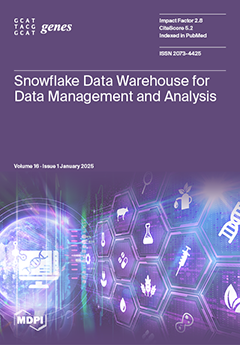Background/Objectives: Abiotic stresses impose significant constraints on crop growth, development, and yield. However, the comprehensive characterization of the maize (
Zea mays)
lipoxygenase (
LOX) gene family under stress conditions remains limited. LOXs play vital roles in plant stress responses by
[...] Read more.
Background/Objectives: Abiotic stresses impose significant constraints on crop growth, development, and yield. However, the comprehensive characterization of the maize (
Zea mays)
lipoxygenase (
LOX) gene family under stress conditions remains limited. LOXs play vital roles in plant stress responses by mediating lipid oxidation and signaling pathways.
Methods: In this study, 13
ZmLOX genes were identified in maize and characterized to explore their functions under abiotic stresses.
Results: Phylogenetics revealed that
ZmLOX genes share evolutionary origins with
LOX genes in Arabidopsis and rice. Promoter analysis identified
cis-acting elements associated with growth, light response, hormone signaling, and stress response, indicating their diverse biological roles. Gene Ontology (GO) and KEGG enrichment analyses showed that
ZmLOX genes are involved in jasmonic acid metabolism, lipid signaling, and photosynthetic processes, while protein–protein interaction (PPI) analysis positioned ZmLOX proteins as central hubs in stress-related regulatory networks. Differential expression and qRT-PCR analyses revealed stress-specific (including heat, drought, salt, and cold) expression patterns, with
ZmLOX2 and
ZmLOX13 showing key roles in drought and cold tolerance, respectively.
Conclusions: These findings provide new insights into the regulatory functions of
ZmLOX genes, offering potential targets for enhancing maize resilience to abiotic stresses and improving agricultural productivity.
Full article






